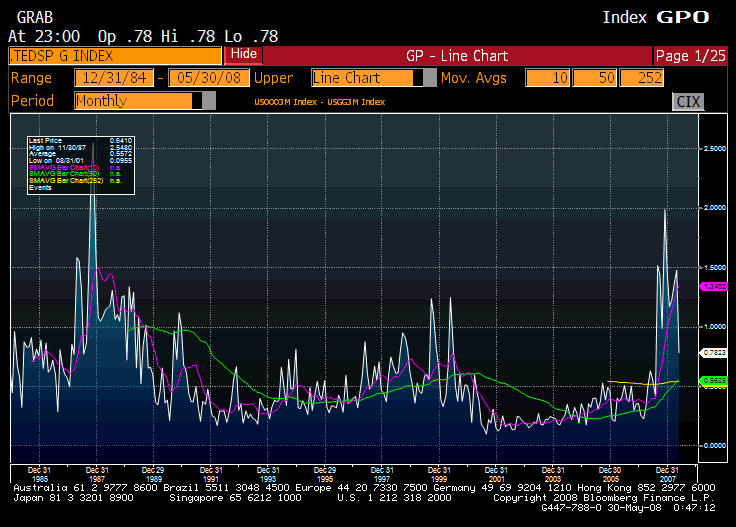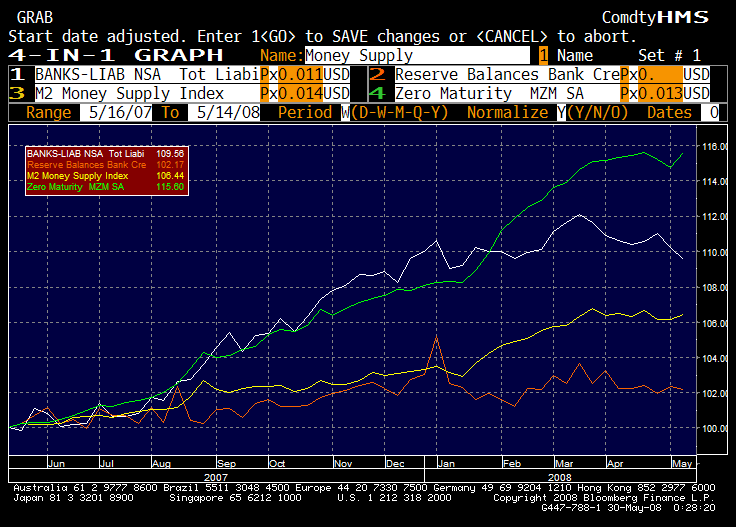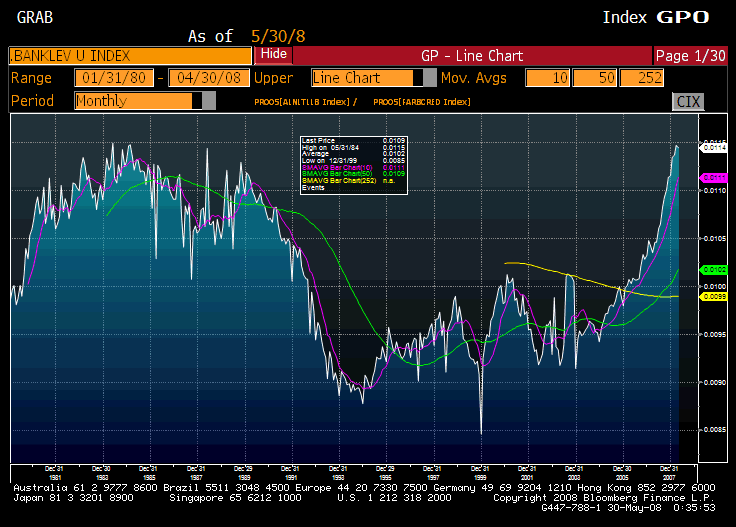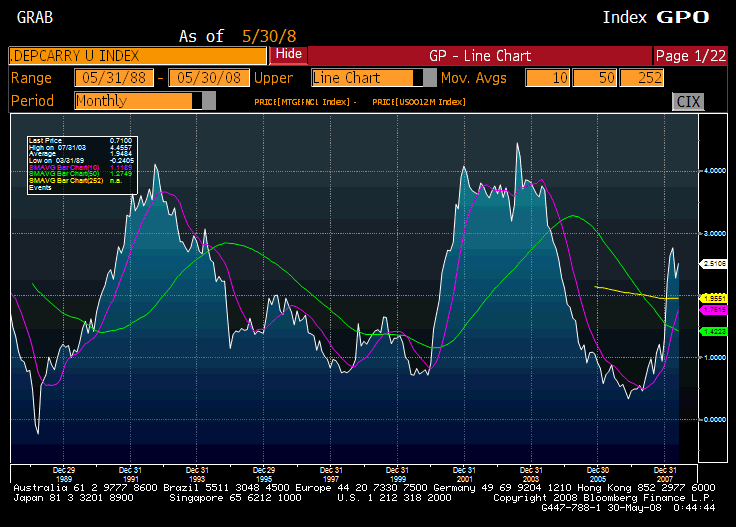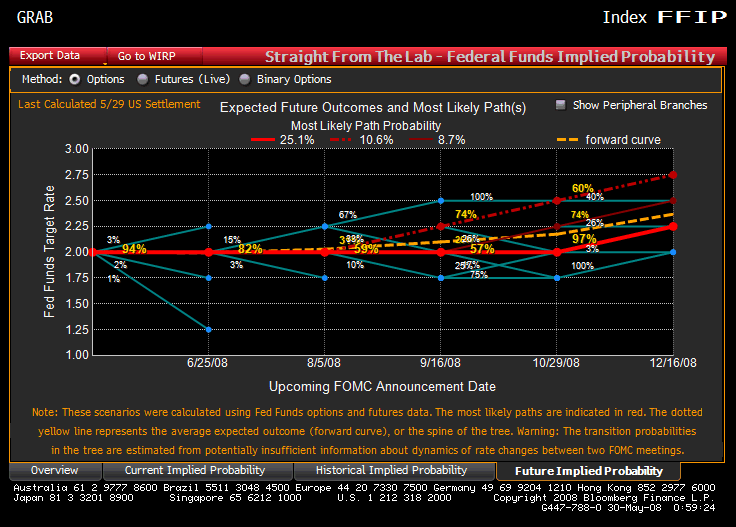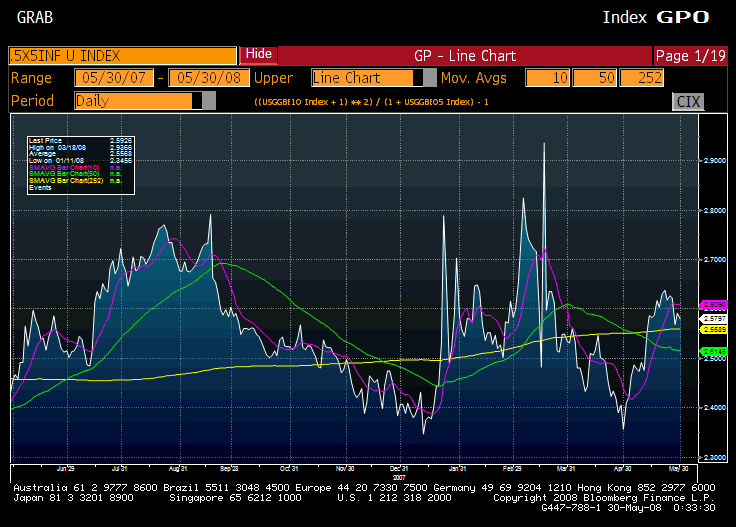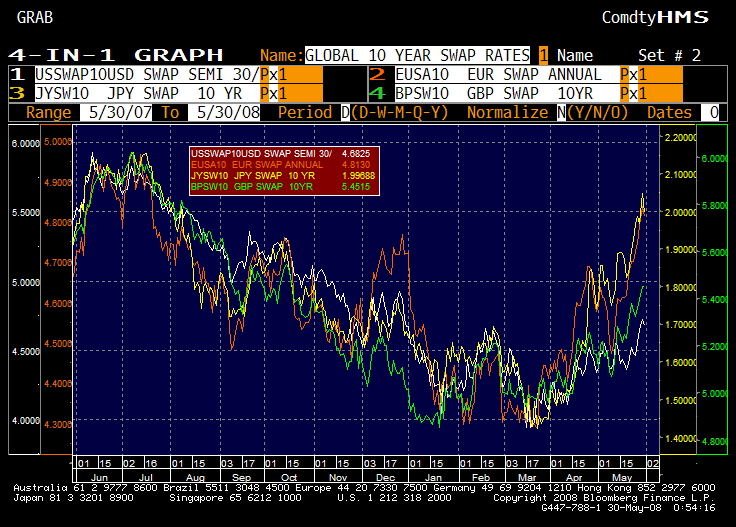Again, Not Worried About Reinsurance Group of America
From the 6/2 RealMoney Columnist Conversation:
| David Merkel | ||
| Rebalancing Sales, and a Buy | ||
| 6/2/2008 4:08 PM EDT |
Late last week, I had two rebalancing sells, Charlotte Russe and Smithfield. Today, two more, Honda Motor and Nam Tai Electronics. As the market has risen (or, some of my stocks at least), cash has been building up, and I have added some of my own free cash to the Broad Market portfolio. I’m at about 14% cash.
So, it’s time to buy something, though I am waiting on the market to show a little more weakness before I act. But, though dinner may wait, perhaps an appetizer is in order: today I added to my position in Reinsurance Group of America. MetLife finally decides to shed this noncore asset in a tax-free stock swap, allowing current MetLife shareholders to swap their MetLife shares for shares in RGA.
RGA should get a higher multiple as a “pure play” life reinsurer; that will come later. Today was the selling pressure in advance of the new supply. I like the management team at RGA, and think this will allow them the freedom to add value on their own. One other odd kicker… it might allow them to do more reinsurance business with MetLife, because they will be independent and thus truly be a third party.
Position: long CHIC SFD HMC NTE RGA
A few additional notes, for me long only means running with 0-20% cash. I don’t go above 20%; I don’t borrow. Under normal conditions, I like running around 5-7% cash. If the NAHC stake is counted in, (arbitrage gets a pseudo-cash return) then we are at that 20% upper limit.
That leads me to take a few actions — I have bumped up my central band for my holdings by 16%. Translated, the points at which I do buy and sell rebalancing trades has risen 16%, as has my normal position size. Looking back through the years, back to 1992 when I started value investing, my position sizes were 5% of what they are today, and back then I had 10 positions, not 35. There’s been growth. 🙂
My second action was a temporary purchase of some RGA. I doubled my position temporarily, because I think most analysts will smile on the deal, and RGA has always been a good buy at book value.
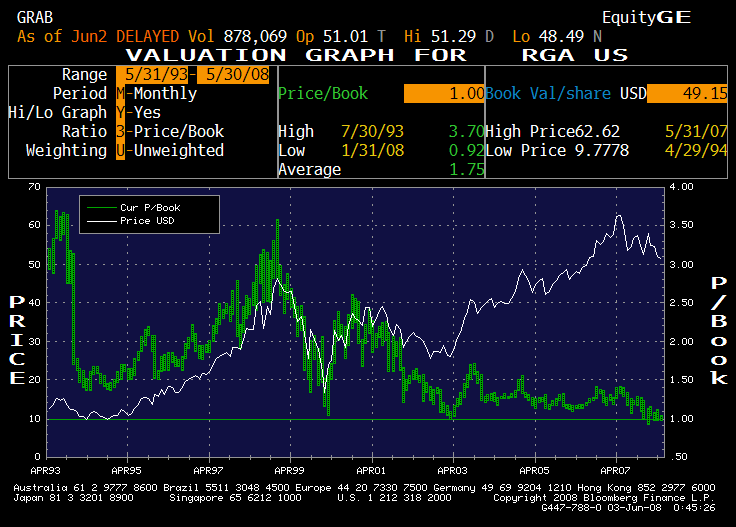
No telling whether buying at 1.0x book will continue to be a good idea in the future. RGA is a well-run company in an oligopolistic industry. The management is smart and conservative. They have international growth opportunities, and now, possible new business from MetLIfe. The moat is wide here. You can’t reverse engineer the #2 life reinsurer in the US and the World.
So, I’m happy with my position here. That said, I may trade away the speculative part of my holdings in the short run, and I may buy some MetLife as well. MetLife is cheap, though not as cheap as RGA, but I suspect when MetLife offers RGA shares in exchange for MetLife shares, they will have to make the tradeoff sweet in order to get some flexible institutional investors to do the swap. Why? MetLife is a large cap stock that is very diversified. RGA is a midcap that is not as diversified. MetLife is a well-respected brand name. RGA? Who?
Insurance is opaque; reinsurance is doubly so. There are no comparables for RGA. MetLife has Pru, Principal, Lincoln National, and a few more. So, I may speculate on MetLife in order to get some cheap RGA. Most likely, I’ll need to see the terms, but if RGA is up a lot tomorrow, and MetLife is not, I may just do the swap.
Note to my readers: one odd thing about my blog is that I write about a wide number of issues. I know I have been doing more on my stock investing lately, but that is partially due to the lack of news on the macro front. That’s the nature of what I do. I am an investor that pays attention to the global economy. I’m trying to make money off my insights, and not merely report on what is happening. I hope some of it rubs off on my readers also, and that you personally benefit from it. For those who find my blog to be a confusing melange — well, that’s who I am, a generalist whose interests are broad.
But, if you like the individual stock coverage, let me know. If you hate it, let me know also.
Full disclosure: long CHIC SFD HMC NTE RGA NAHC LNC


 Where were you while America aged? 😉 I’ve been following the issues in this book written by Roger Lowenstein for over 20 years. As an actuary (but not a pension actuary) and a financial analyst, I have written about the issues involved since 1992.
Where were you while America aged? 😉 I’ve been following the issues in this book written by Roger Lowenstein for over 20 years. As an actuary (but not a pension actuary) and a financial analyst, I have written about the issues involved since 1992.
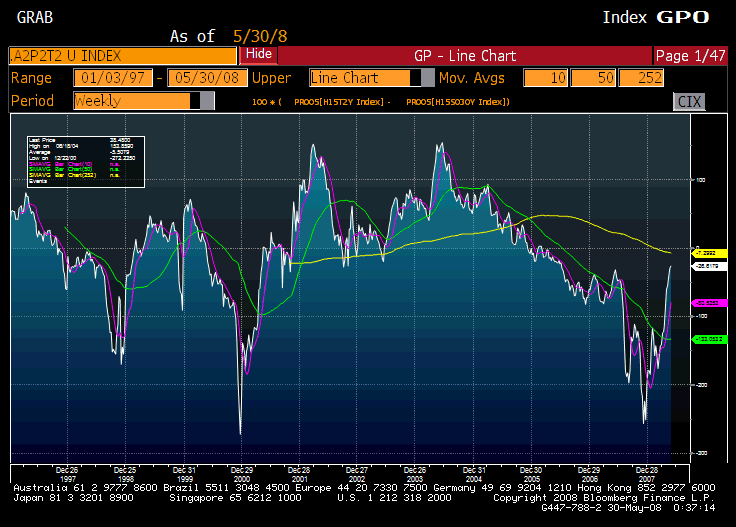 This graph shows the difference between yields on A2/P2 commercial paper and the 2-year Treasury. What this says is that a BBB company can borrow unsecured for a month at 2.7%. Not bad. Now look at the Treasury-Eurodollar [TED] spread:
This graph shows the difference between yields on A2/P2 commercial paper and the 2-year Treasury. What this says is that a BBB company can borrow unsecured for a month at 2.7%. Not bad. Now look at the Treasury-Eurodollar [TED] spread: